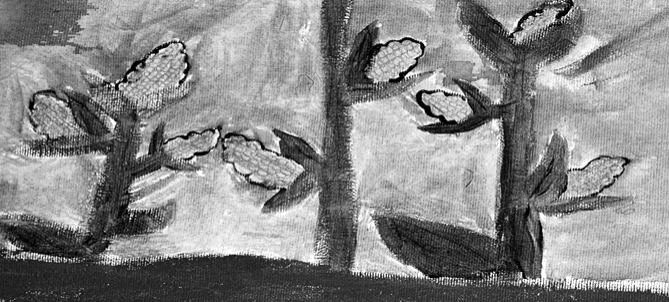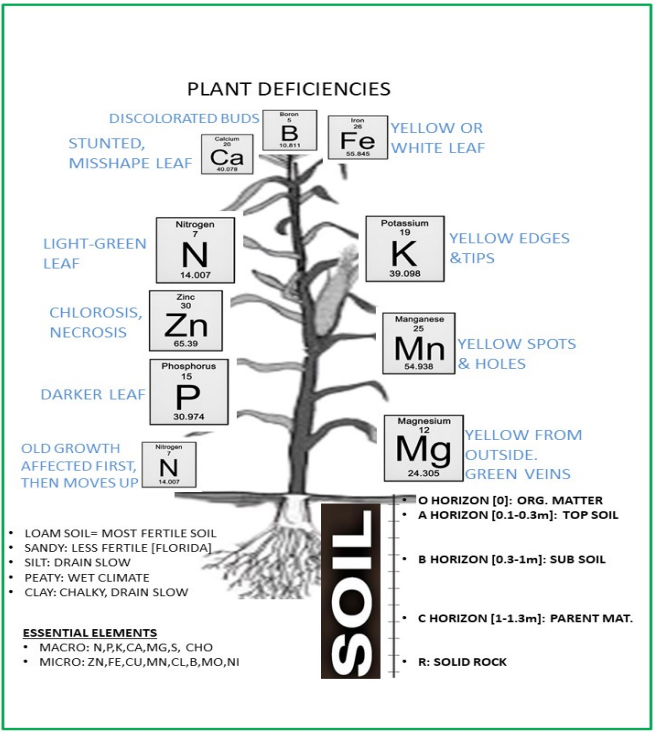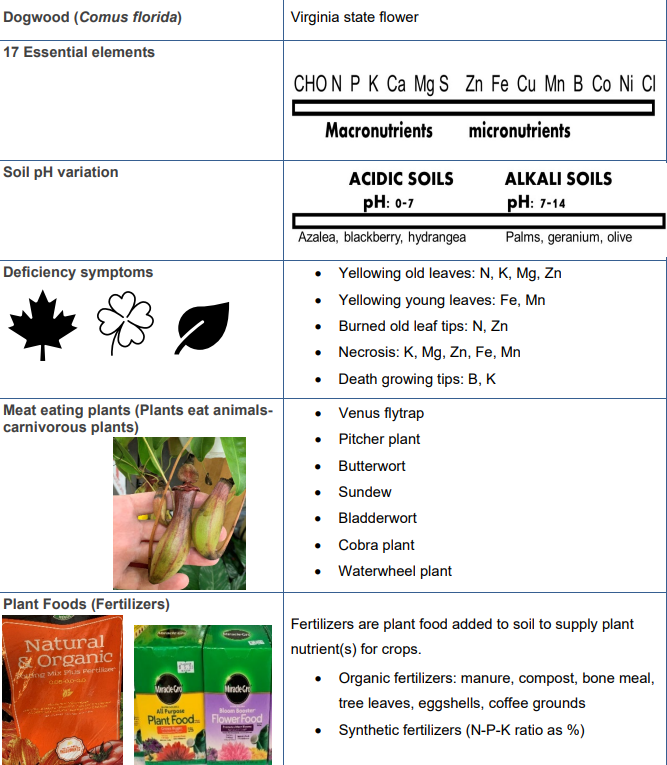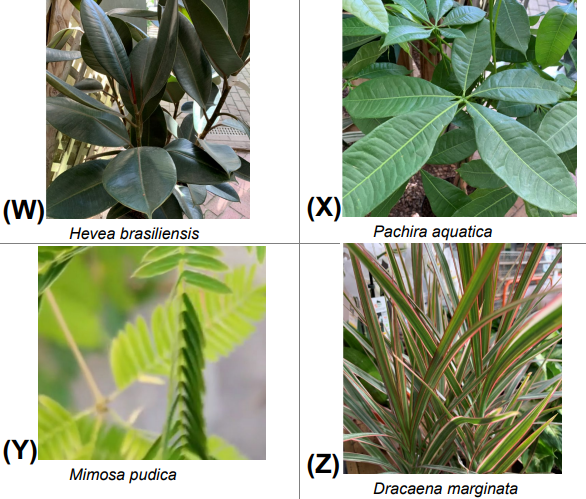1.13: Nutrición Vegetal
( \newcommand{\kernel}{\mathrm{null}\,}\)

La nutrición tiene un impacto crítico desde el suelo hasta las plantas y los niveles de las personas. Los nutrientes esenciales son requeridos por la vida pero no pueden ser sintetizados por el organismo. Para las plantas, los nutrientes minerales esenciales se pueden dividir en dos grupos distintos, y todos son necesarios para el crecimiento y la producción:
- Macronutrientes (necesarios en mayores cantidades): nitrógeno (N), fósforo (P), potasio (K), calcio (Ca), magnesio (Mg) y azufre (S)
- Micronutrientes (oligoelementos, necesarios en cantidades menores): zinc (Zn), cobre (Cu), hierro (Fe), cloruro (Cl), manganeso (Mn), molibdeno (Mo), boro (B), níquel (Ni), selenio (Se), yodo (I)
El ascenso de la población mundial a 10 mil millones para 2050 requerirá claramente no solo más producción de alimentos sino también una mayor eficiencia en el uso de nutrientes, ya que son factores limitantes críticos.
- SLO 13.01: Aplicar las mejores prácticas para el aprendizaje de la nutrición mineral vegetal
- SLO 13.02: Describir las características deN (nitrógeno),P (fósforo) yK (potasio)
- SLO 13.03: Describir la importancia del zinc (Zn) en las plantas
- SLO 13.04: Explicar algunos de los síntomas comunes de las deficiencias de nutrientes
- SLO 13.05: Identificar especies de plantas dadas con sus nombres científicos en función de sus características clave
- SLO 13.06: Definir componentes del suelo
- SLO 13.07: Describir micorrizas y rizobios para plantas P y N


- Evaluación 1: VERDADERO o FALSO: Los nutrientes esenciales son los más importantes para el ciclo de vida de las plantas.
- Evaluación 2: NOMBRE LA DEFICIENCIA: Clorosis foliar vieja, manchas necróticas, plantas atrofiadas, especialmente en maíz, sorgo, frijol, papa
- Evaluación 3: NOMBRE LA DEFICIENCIA: Amarillamiento de hoja vieja, planta entera de color verde claro, deficiencia de nutrientes más común.
- Evaluación 4: NOMBRE LA DEFICIENCIA: Puntas foliares quemadas, hoja vieja morada/verde oscuro, segunda deficiencia más común.

- TRUE
- Zn(deficiencia de zinc)
- N(deficiencia de nitrógeno)
- P(deficiencia de fósforo)


